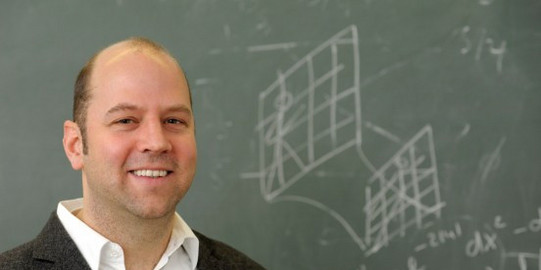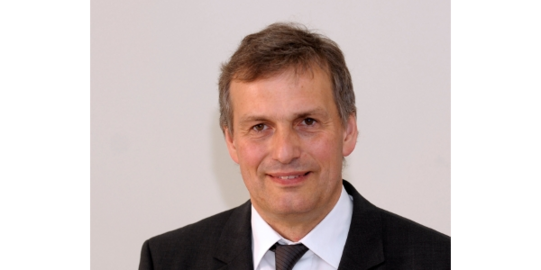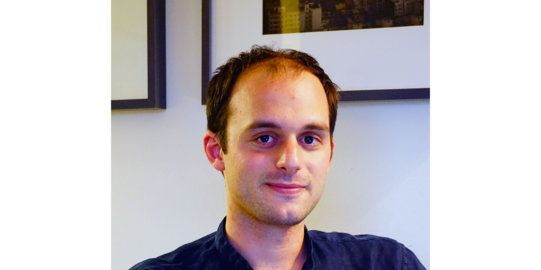Research Focus: Particle Physics
The research focus particle physics comprises experimental and theoretical fields of particle and astroparticle physics. The focus is on questions concerning the fundamental building blocks of the universe, their sources and the forces acting between them.
The experimental particle physics groups are involved in the study of processes involving bottom and top quarks, e.g., the search for rare decays, the measurement of CP violation, and the determination of couplings, as well as direct and indirect searches for new physical phenomena. They work on experiments at the Large Hadron Collider at the Geneva research center CERN and are members of the ATLAS and LHCb collaborations, respectively. Their activities focus on data analysis and experiment operation, as well as on the further development and expansion of the detectors.
Astroparticle physics uses stable particles, in particular neutrinos, photons, and atomic nuclei, as messengers from space to study astrophysical sources, cosmological effects, and the properties of these particles. The working groups use data from several large experiments, e.g., the IceCube experiment in Antarctica, RNO-G in Greenland, the Pierre Auger Observatory in Argentina, MAGIC/LST on La Palma, and MeerKAT in South Africa.
The theoretical particle physics groups investigate models beyond the Standard Model of particle physics and study aspects of flavor physics. There is close collaboration with the experimental groups by proposing new observables and interpreting measured data. Another focus of particle theory is on studies of dark matter and the role of neutrinos in the universe.
Contact
For all matters concerning the research focus as a whole, especially in matters of research and teaching, please contact:
Coordinated Programs
The Collaborative Research Center 876 brings together the research areas of data analytics (Big Data Analytics, Data Mining, Machine Learning, Statistics) and embedded systems (Cyber-Physical Systems) and extends them in such a way that information from distributed, dynamic data masses becomes available in real time for on-site decision-making. The volume of data, its heterogeneity and distributed nature, and its often high throughput must be considered in relation to the computing resources given in each case. In particle and astroparticle physics, we are researching the removal of resource constraints due to high dimension, dynamics, and volume of data.
SFB 876
The Competence Center Machine Learning Rhine-Ruhr aims to bring machine learning technologies in Germany to a world-leading level. As one of six nationwide hubs on artificial intelligence (AI) and machine learning (ML), the ML2R center is funded by the German Federal Ministry of Education and Research (BMBF). The Technische Universität Dortmund, the Fraunhofer Institutes for Intelligent Analysis and Information Systems IAIS in Sankt Augustin and for Material Flow and Logistics IML in Dortmund, and the University of Bonn are involved. In particle and astroparticle physics, the development of artificial intelligence is being advanced and tested here.
ML2R
The BMBF research focus ErUM-FSP T02 "Physics at the highest energies at the Large Hadron Collider" is a German research network of fifteen institutions. The research focus is elementary particle physics at the Large Hadron Collider (LHC) at CERN, Geneva, with the ATLAS detector. The Department of Physics is involved in the measurement of the properties of the top quark and the search for new physical processes at the highest energies, as well as in the operation of the ATLAS experiment. In addition, the department is involved in the further development of the semiconductor-based track detector of the ATLAS experiment within the framework of a research infrastructure grant.
BMBF ErUM-FSP T02
The BMBF-funded research program ErUM-FSP T04 "LHCb: Quark flavor physics at the LHC" combines the research activities of the German groups in the framework of the LHCb experiment at the Large Hadron Collider (LHC) of CERN. LHCb specializes in the investigation of the beauty and charm hadrons produced in large numbers at the LHC. The Dortmund research focuses on studies of matter-antimatter asymmetry and extremely rare decays of beauty hadrons. These investigations allow the indirect search for new particles with mass scales significantly above what can be produced directly at the LHC. In addition to data analysis, the operation and further development of the experiment is a central component of the activities. In particular, the work in Dortmund on the development and construction of a new track detector, which is currently being installed at CERN, should be mentioned here.
BMBF ErUM-FSP T04
The neutrino observatory IceCube, funded under BMBF-ErUM Universe, is a versatile particle detector with an instrumented volume of one cubic kilometer. In addition to high-energy neutrinos from astrophysical sources, IceCube can detect atmospheric muons and neutrinos, as well as exotic particles such as magnetic monopoles. The astroparticle physics group at TU Dortmund University is a member of the IceCube collaboration and will also participate in the proposed upgrades of the detector. The scientific focus of the Dortmund group is on reconstructing energy spectra, simulating lepton propagation through different detector media, and reconstructing different particle properties, such as energy and direction, using deep learning methods. The multinational IceCube collaboration has member institutes in Europe, the United States, Japan, and Australia.
BMBF-ErUM Universe IceCube
The BMBF-ErUM Universe CTA-D funding area combines the German participation in the Cherenkov Telescope Array (CTA). Within the BMBF project, we are participating in the construction of the future generation of ground-based gamma-ray telescopes, which will be installed at two sites in the northern and southern hemisphere of the Earth. The first telescope at the northern hemisphere site on La Palma, in the immediate vicinity of MAGIC, is already in operation and providing initial observational results. Here, the Dortmund scientists are contributing in particular to the development of the analysis pipelines and to the first scientific observations. Another focus is the development of sustainable and efficient methods for the management of the acquired data.
BMBF-ErUM Universe CTA-D
With a new generation of radio interferometers such as the future Square Kilometre Array (SKA), the research area of big data is becoming increasingly important for radio astronomy. The MeerKAT radio telescope system in South Africa's Karoo Desert is a significant first step into this future of radio astronomy. Of great importance for an efficient scientific operation of these huge facilities is the extensive automation of the observations. Within the BMBF-funded project D-MeerKAT-II we provide central contributions to the robotization of the MPG-SKA proto-type antenna, with a special focus on the analysis of sensor data. Our activities are embedded in the German Long Wavelength Consortium (GLOW).









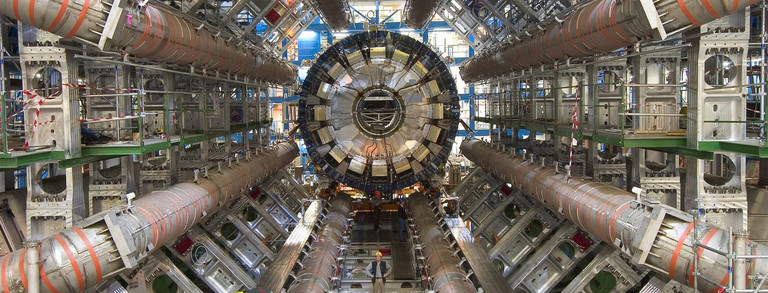

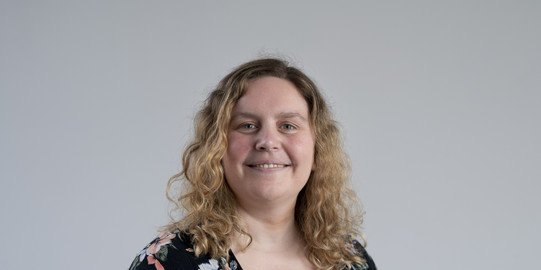


![[Translate to English:] [Translate to English:]](/storages/physik/_processed_/e/b/csm_Hiller_Gudrun_2_59464a928e.png)


